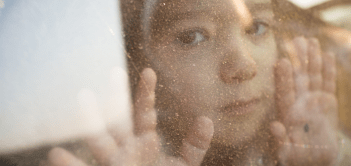Early childhood development refers to children’s physical, cognitive, social, and emotional development from birth to about age 8. It is a critical period in a child’s life, as the experiences and opportunities children have during this time can shape their development and influence their future well-being.
- Physical development refers to the growth and maturation of a child’s body, including the development of gross and fine motor skills.
- Cognitive development refers to the development of a child’s ability to think, remember, and learn.
- Social and emotional development refers to the development of a child’s social skills and emotional intelligence, including the ability to form and maintain relationships, regulate emotions, and communicate effectively with others.
Development Starting from The First Day of Birth
From the first day of birth, a child’s development is shaped by their experiences and interactions with their environment and caregivers.
During the first year of life, a child’s physical development is rapid as they grow and gain control over their body movements.
They will also begin to develop their cognitive and social-emotional skills, including communicating through facial expressions and sounds and forming attachment and social bonds with their caregivers.
Caregivers need to provide a nurturing and supportive environment for a child during this time, which includes meeting their basic needs for food, shelter, and safety, as well as providing opportunities for play and exploration.
This can help to support the child’s physical, cognitive, social, and emotional development as they grow and develop.
Children Learn by Playing and Curiously
Children indeed learn through play and by being curious. Play is an important way for children to learn and develop new skills.
It allows them to explore their environment, test out new ideas, and practice what they have learned. Play also helps children to develop critical social skills, such as teamwork, communication, and problem-solving.
Being curious is also an essential part of learning for children. Children are naturally curious and want to learn about the world around them.
Encouraging children to ask questions and explore their environment can help them to develop their critical thinking skills and deepen their understanding of the world.
Overall, play and curiosity are crucial for children’s development and learning, and by providing them with opportunities to play and explore, we can support their learning and help them grow and develop to their full potential.
Children’s Learning Start from Their Very Young
If we tell you that babies can learn things while still in the womb, would you believe that?
Indeed, research has shown that Childhood begins learning from a very young age, even before they are born. In fact, babies can learn and remember things while they are still in the womb.
After they are born, they continue to learn and develop rapidly, with their brains developing new connections and abilities every day.
Children learn through various experiences and interactions, including play, exploration, and observation. They are naturally curious and constantly seek new information and experiences to help them understand the world around them.
As they grow and develop, they learn new skills and concepts through their interactions with others, including their caregivers and peers, as well as through educational activities and experiences.
It is essential for parents and caregivers to provide a supportive and stimulating environment for children to learn and grow.
This includes providing opportunities for children to explore and learn through play, exposing them to various experiences and activities, and supporting their natural curiosity and desire to learn.
Children Need a Clean and Safe Environment
It is crucial for children to have a clean and safe environment in order to thrive and develop to their full potential. A clean environment helps to prevent the spread of illness and disease, and a safe environment protects children from physical harm.
This can include having access to clean water, proper sanitation facilities, and being protected from environmental hazards such as pollution and toxic substances.
Providing children with a clean and safe environment is the responsibility of parents, caregivers, and communities, so they must work together to provide children with clean and safe environments.
This may involve ensuring that children have access to clean water and air, safe housing, and adequate supervision, as well as educating children about how to stay safe and healthy.
Play Gives Children Opportunities to Think and Solve
Play is an important part of children’s development and learning. It allows children to …
- Think and problem-solve.
- Explore their environment.
- Learn new skills.
- Practice and reinforce existing skills.
- Express their creativity and imagination.
- Develop independence and decision-making skills.
- Develop physical skills.
- Develop social skills and emotional intelligence.
During play, children are free to make their own choices and decisions, which helps them to develop their independence and decision-making skills.
They can also learn to negotiate and compromise with others as they work together to achieve common goals.
Play also helps children to develop their physical skills, such as fine motor skills and coordination. They can practice throwing, catching, kicking, and other physical activities that require control and precision.
In addition, play can help children to develop social skills and emotional intelligence. They can learn how to interact with others, share, and take turns.
Play can also help children manage their emotions and learn how to express themselves in a healthy way.
Pay Attention to How Your Children Communicate With You
It is vital for parents to pay attention to how their children communicate with them. Children’s communication skills are essential to their development and can provide insight into their emotional well-being, social interactions, and overall functioning.
Here are some tips for paying attention to your children’s communication:
- Pay attention to their nonverbal cues: such as body language and facial expressions, to better understand what your child is trying to communicate.
- Listen actively: Give your full attention and listen attentively to your child when they are speaking to you.
- Encourage open communication: Create an environment where your child feels safe and comfortable sharing their thoughts and feelings with you.
- Respond empathetically: When your child expresses their thoughts and feelings, show empathy and understanding, to build trust and strengthen your relationship with your child.
Child Development Simple Activities
It’s important to remember that children develop at different rates, so choosing appropriate activities for your child’s age and abilities is important. Many simple activities can support children’s development in various areas, such as physical, cognitive, social, and emotional. Here are a few examples:
- Physical development:
- Play catch or throw and catch.
- Do a “freeze dance.”
- Play with playdough.
- Cognitive development:
- Play simple board games.
- Do puzzles.
- Read books together.
- Social and emotional development
- Play “pretend” or dress up.
- Play “Simon Says”.
- Have children help with simple household chores.
FAQs
What is Meant by Childhood Development?
Early childhood development refers to children’s physical, cognitive, social, and emotional development from birth to about age 8.
What are Examples of Childhood Development?
Physical Development like developing fine motor skills and developing sensory abilities.
Cognitive Development like learning the language, communication, thinking, and problem-solving skills.
Socioemotional Development like developing a sense of identity and self-awareness, managing emotions, and regulating behavior.
What is the Importance of Childhood Development?
Childhood development is important because it lays the foundation for a child’s future physical, cognitive, and socioemotional well-being.
Content
- Development Starting from The First Day of Birth
- Children Learn by Playing and Curiously
- Children’s Learning Start from Their Very Young
- Children Need a Clean and Safe Environment
- Play Gives Children Opportunities to Think and Solve
- Pay Attention to How Your Children Communicate With You
- Child Development Simple Activities
- FAQs



